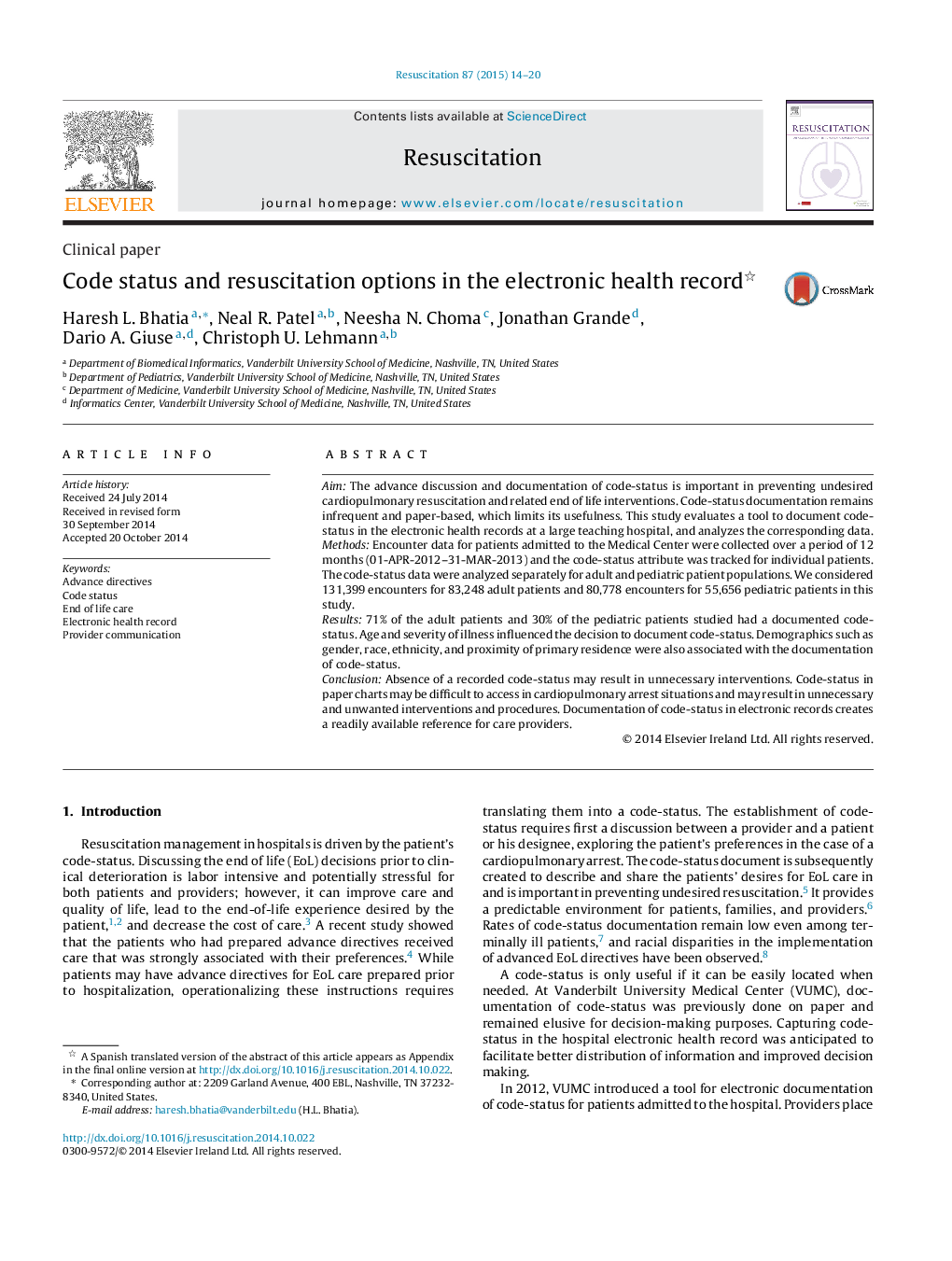| Article ID | Journal | Published Year | Pages | File Type |
|---|---|---|---|---|
| 5998024 | Resuscitation | 2015 | 7 Pages |
AimThe advance discussion and documentation of code-status is important in preventing undesired cardiopulmonary resuscitation and related end of life interventions. Code-status documentation remains infrequent and paper-based, which limits its usefulness. This study evaluates a tool to document code-status in the electronic health records at a large teaching hospital, and analyzes the corresponding data.MethodsEncounter data for patients admitted to the Medical Center were collected over a period of 12 months (01-APR-2012-31-MAR-2013) and the code-status attribute was tracked for individual patients. The code-status data were analyzed separately for adult and pediatric patient populations. We considered 131,399 encounters for 83,248 adult patients and 80,778 encounters for 55,656 pediatric patients in this study.Results71% of the adult patients and 30% of the pediatric patients studied had a documented code-status. Age and severity of illness influenced the decision to document code-status. Demographics such as gender, race, ethnicity, and proximity of primary residence were also associated with the documentation of code-status.ConclusionAbsence of a recorded code-status may result in unnecessary interventions. Code-status in paper charts may be difficult to access in cardiopulmonary arrest situations and may result in unnecessary and unwanted interventions and procedures. Documentation of code-status in electronic records creates a readily available reference for care providers.
